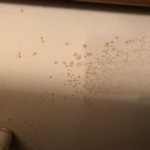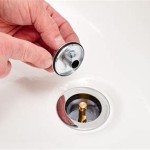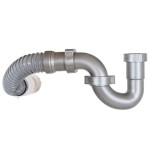How To Paint Bathroom Wall Ceramic Tile
Painting bathroom wall ceramic tile can be a cost-effective way to update a dated bathroom without a full renovation. Proper preparation and the right materials are key to achieving a durable and attractive finish. Following these steps will ensure a successful painting project.
1. Clean the Tile Thoroughly
The first step is to ensure the tile surface is immaculately clean. Any dirt, grime, soap scum, or mildew will interfere with the paint's adhesion. Use a heavy-duty tile cleaner or a mixture of warm water and trisodium phosphate (TSP) to scrub the tiles. A scouring pad can be helpful for stubborn grime. After cleaning, rinse the tiles thoroughly with clean water and allow them to dry completely.
2. Repair any Damaged Tiles or Grout
Before painting, inspect the tile and grout for any damage. Cracked or chipped tiles should be repaired or replaced. Damaged grout should be removed and replaced with new grout. Allow the new grout to cure completely according to the manufacturer's instructions before proceeding with the painting process.
3. Sand the Tile Surface
Sanding the tile creates a slightly rough surface that helps the primer and paint adhere better. Use 220-grit sandpaper to lightly sand the entire surface of the tiles. This will also help to dull the glossy finish of the tiles, which further improves paint adhesion. After sanding, wipe down the tiles with a damp cloth to remove any dust.
4. Apply a High-Adhesion Primer
A high-adhesion primer formulated for glossy surfaces is essential for a successful tile painting project. This type of primer creates a bonding layer between the slick tile and the paint. Apply the primer evenly with a brush or roller, ensuring full coverage. Allow the primer to dry completely according to the manufacturer’s instructions, which typically takes several hours.
5. Choose the Right Paint
Selecting the right paint is crucial for durability and longevity. A high-quality epoxy or acrylic latex paint designed for bathrooms or kitchens is recommended. These paints are formulated to withstand the high humidity and moisture common in bathroom environments. Consider using a semi-gloss or satin finish for easier cleaning and mildew resistance. Avoid flat or matte finishes, as they tend to be more porous and susceptible to moisture damage.
6. Apply the Paint
Once the primer is dry, apply the paint in thin, even coats. Using a high-quality brush or roller designed for smooth surfaces is essential for a professional-looking finish. Multiple thin coats are preferable to one thick coat, as they allow the paint to dry evenly and minimize the risk of drips or runs. Allow each coat of paint to dry completely before applying the next, following the manufacturer's recommended drying times.
7. Seal the Painted Surface (Optional)
For added protection and durability, consider applying a clear urethane sealer over the dried paint. This will help to protect the paint from moisture, scratches, and chipping, especially in high-traffic areas. Follow the manufacturer's instructions for application and drying times. Ensure adequate ventilation when working with a sealer.
8. Allow Proper Curing Time
After the final coat of paint or sealer has been applied, allow the painted tile to cure completely before exposing it to moisture or heavy use. This may take several days or even a week, depending on the type of paint and sealer used. Avoid showering, bathing, or cleaning the painted area during the curing period.
9. Maintain the Painted Tile
Proper maintenance will help extend the life of your painted tile. Clean the painted surface regularly with a mild, non-abrasive cleaner and a soft cloth or sponge. Avoid using harsh chemicals or abrasive cleaners, as they can damage the paint. Quickly address any spills or splatters to prevent staining. With proper care, your painted tile can provide a fresh, updated look for years to come.
10. Consider Ventilation
Proper ventilation is essential in a bathroom, particularly after painting. Moisture buildup can lead to mildew growth and damage the paint. Ensure adequate ventilation by running the bathroom fan during and after showers and baths, and by opening a window when possible. This will help to keep the painted tile dry and prevent moisture-related problems.

Can I Paint Ceramic Tiles In Bathroom Ramsden Painting

Learn How To Paint Tiles Rubi Blog Usa

How To Paint Over Ceramic Tiles In A Bathroom

How To Paint Over Ceramic Tiles In A Bathroom

How To Paint Over Tile Average But Inspired

Small Bathroom Makeover With Painted Tile And Floors The Home Depot

Update Your Bathroom Tiles With Dulux Renovation Range Paint

How To Paint Bathroom Tiles Bunnings Warehouse

How To Paint Tiles 3 Easy Steps Transform Dated On A Budget

How To Paint Shower Tile Remington Avenue
Related Posts







